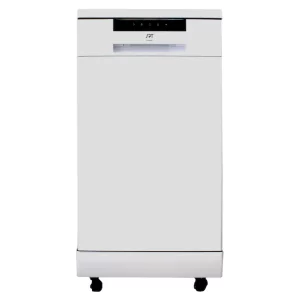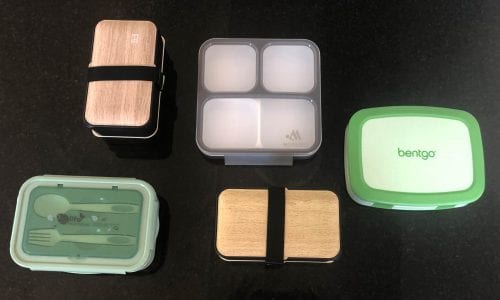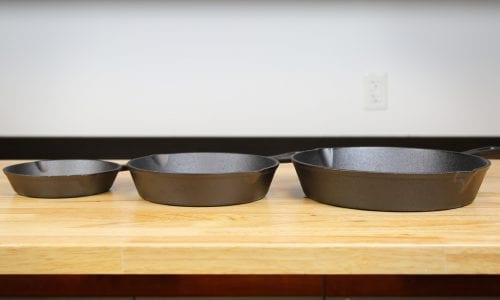The Best Dishwasher

Our Review Process
Don't Waste Your Money is focused on helping you make the best purchasing decision. Our team of experts spends hundreds of hours analyzing, testing, and researching products so you don't have to. Learn more.
Our Picks For The Top Dishwashers
- 1. KAPAS Portable LED Display Countertop Dishwasher
- 2. BLACK+DECKER LED Display Portable Dishwasher
- 3. Faberware FCD06ABBWHA Stainless Steel Full Panel Countertop Dishwasher
- 4. EdgeStar Automatic Off Energy-Saving Dishwasher
- 5. Danby Compact Easy Set-Up Countertop Dishwasher
- 6. EdgeStar Quick Connect Under Cabinet & Countertop Dishwasher
- 7. SPT Time Delay Adjustable Dishwasher
- 8. Bosch Stainless Steel Fully Integrated Dishwasher
- 9. SPT Rinse Aid Customizable Dishwasher
- 10. GE Profile Full Panel Dishwasher
In addition to cleaning your plates and utensils, this dishwasher also rinses off your produce. The unit is nice and compact and won't take up too much space on your counter. It also has its own water tank, which means you don't have to hook it up to a faucet to use it.
Most VersatileWith this dishwasher, you can use liquid or powder detergents, as well as detergent pods.
Since this dishwasher is able to clean six place settings at once, it's an excellent choice for families who still need a smaller unit. It fits neatly on any countertop and offers up to seven different wash cycles. The LCD screen is a cinch to read and the handle is easy to grip and operate.
Great for FamiliesThis dishwasher hooks directly to your kitchen faucet, so you can begin using it almost immediately.
This dishwasher comes with an Energy Star certification, which means it's designed to run efficiently. The unit is smaller in size, yet still able to clean up to six place settings. A silverware basket is included and you'll have a choice between seven washing programs.
Convenient ChoiceIf you have small children in the home, you'll want to go with this dishwasher, which is equipped with a child lock.
If the space between your kitchen sink and the wall is minimal, you'll want to give this slim dishwasher a try. Although the unit is slender, it's still able to accommodate as many as eight table settings. The dishwasher runs quietly and even comes with a handy leakage sensor.
Slim DesignYou'll find this dishwasher comes in a white, stainless steel and elegant black finish.
Buying Guide
Dishwashers are one of the best modern conveniences. Simply slide your dishes inside, press a few buttons, and within an hour, you have clean dishes. But occasionally, you’ll find yourself needing to buy a dishwasher. Maybe yours suddenly died after years of use, or maybe you moved into a place that doesn’t have one. If that happens, you’ll probably be surprised at how many options you have.
The first big decision you’ll have to make is whether you want a portable or built-in dishwasher. Built-ins are just as the name implies. They’ll be installed in your kitchen, where they’ll become part of your cabinetry. Full-size built-ins are generally about 24 inches in size.
However, there are also more compact and portable dishwashers, which don’t require installation and can be taken with you when you move. If you’re limited on space, you should also consider a countertop dishwasher, which rests on top of your countertops. Although they won’t wash as many dishes as a larger model, they do work well for small kitchens and studio apartments.
MORE: This countertop dishwasher is a helpful alternative for small kitchens
“Obviously, size affects both the price you pay, and the amount of water and energy used,” points out culinary expert Julie Chernoff, food journalist, dining editor of Better magazine and member of Les Dames d’Escoffier.
If you opt for a built-in dishwasher, you’ll need installation, so be sure you budget for that as well. Setup on portable models can sometimes be done yourself, following the instructions provided by the manufacturer. But for a built-in dishwasher, unless you’re prepared to tackle the hookups, it’s probably best to plan on using installation services.
Efficiency is one of the top considerations when choosing a dishwasher. After all, no dishwasher will be useful if it doesn’t clean your dishes. Although most of today’s dishwashers excel at maximum cleaning power with minimum energy input, there is one area where they fall short. The condensation method of drying that replaced heated drying is eco-friendlier, but it also isn’t nearly as effective at drying. A rinse agent can help, as well as opening the door to let your dishes air dry for a while before putting them away.
You’ll also be attracted to the many bells and whistles available — and some will be more useful than others depending on your lifestyle and needs.
“Make sure that you have a number of washing cycles to choose from, including light and heavy wash and economy settings,” Chernoff advises. “When looking at capacity, I think it’s nice to have the flatware tray option at the top of the machine, so you have more room to store dirty dishes. Do you wash a lot of tall wine glasses? You’ll want to make sure that your dishwasher racks are adjustable.”
And don’t forget, you’ll have to do some maintenance if you don’t rinse all your plates before you put them in. Make sure to clean out the filter once a month.
Chernoff offers a pro tip to help keep your dishwasher fresh and free from lingering odors: “Once a quarter, in an otherwise empty unit, put a cup of white vinegar in an open, dishwasher-safe container on the top rack of the dishwasher and run a hot cycle,” she says.
Our Expert Consultant

Culinary Expert
Julie Chernoff is a long-time member of Les Dames d’Escoffier (past president of the Chicago Chapter, and current co-chair of the LDEI Legacy Awards Committee), the Association of Food Journalists (AFJ) and the International Association of Culinary Professionals.
Chernoff is the dining editor of Better, a lifestyle website and print magazine. Her journalism started in the test kitchens of Weight Watchers Magazine. She holds a BA in English from Yale University and is a graduate of the California Culinary Academy. She has spent the last few decades styling, photographing, teaching, developing recipes, editing, thinking and writing about food.
What to Look For
- If you’re in the market for a built-in dishwasher, installation is an important consideration. You can do it yourself, but you’re dealing with wiring and plumbing, so a professional installer is usually best. If you buy from a store or website, installation is typically an add-on item, so make sure you look for that.
- With some dishwashers, setup is much easier. You’ll just connect them to the faucet using an adaptor and plug it in to get started. With the hOmeLabs Countertop Dishwasher, the faucet adaptor is not included, so you’ll need to buy one to have on hand when it arrives.
- If you live in a smaller place, you may want to look for a quieter unit. Some models run at only 42 decibels, which means you can even have a conversation standing next to it.
- Cycle flexibility can come in handy if you’re picky about the way your dishes are washed. The hOmeLabs Countertop Dishwasher and Danby Countertop Dishwasher both have six wash settings. Some models have a one-hour cycle setting that can come in handy when you’re in a hurry.
- Look for a build that prevents leaks. If the dishwasher detects a leak, whether it’s running or not, a feature called AquaStop will shut everything down.
- You’ll get the most space in a dedicated unit that is not only roomy, but also has a double-flex silverware basket. Some models are small but spacious, offering an adjustable top rack to help you make room for pans or baking sheets on the bottom rack. Some compact models will hold six place settings. However, if you routinely cook with large pots and pans, you may find you have to handwash those items.
- If your dishwasher is in view of your other living areas, you may like a model with a red light that shines on your kitchen floor when the machine is running. They also tend to show the time remaining on your wash.
- The hOmeLabs Countertop Dishwasher has an especially easy-to-use control panel, with buttons that walk you through your options and a simple start button when you’ve chosen your settings.
- Without a good latch, someone could walk into the kitchen and open the door, interrupting your wash. Dishwashers with a self-latching door are ideal, as they keep your door closed unless someone in your household is really determined to open it.
- The stainless-steel build of many of today’s dishwashers make them more durable than previous generations. Stainless steel protects against rust and gives the dishwasher a classy look. Look for strong wheels, so you can get years of reliable use out of your new portable dishwasher.
- You’ll find that most of today’s dishwashers struggle to dry dishes. You’ll especially notice it with plastics, as they cool off too quickly for the moisture to evaporate. Some models don’t have a heat dry option, so you’ll definitely need to open the door to allow air drying.
- For streak-free dishes, make sure you use a rinse aid no matter which dishwasher you choose.
- You’ll usually find you pay the most for a built-in dishwasher, even before you add on installation. But you get more power from built-ins as well, so it’s worth considering. Countertop dishwashers are the cheapest, but you sacrifice rack space for that benefit.
- Many dishwashers don’t come with a self-cleaning filter, while other built-in dishwashers do, so keep that in mind if that’s important to you.
- One handy feature that has become popular on portable dishwashers is a time-delay option. You can set your dishwasher to start up from one to 24 hours in advance. That means you can keep your dishwasher from running during the hours that others in your household are likely to need the hot water. The hOmeLabs Countertop Dishwasher also includes a delay wash feature.
- If you’re looking for a portable or countertop dishwasher, measurements are essential. The hOmeLabs Countertop Dishwasher is 17.2 by 19.6 by 21.6 inches. Other models are similar in size to the hOmeLabs version, at 21.65 by 19.69 by 17.24 inches.
- For those concerned about water consumption, look for a model that uses up to 3.1 gallons of water each wash. The hOmeLabs Countertop Dishwasher uses up to 3.30 gallons. Water use will vary depending on the wash cycle you choose.
- It’s important to check the water temperature limits of any portable dishwasher you choose. Some models can withstand water temperatures all the way up to 154 degrees Fahrenheit.
- Before you buy, take a look around at the layout of the interior of the dishwashers you’re considering. Make sure it will accommodate the glasses, silverware, cookware and utensils you use on a typical day.
More to Explore
Here’s why your dishwasher isn’t getting your dishes dry—and how to fix it
Leave more space around the dishes
That way, the air has more room to circulate and the water left on the dishes will evaporate more quickly.
Use a rinse aid
This addition to your dishwasher can keep your plates and glasses sparkling and also aid in drying. It works by forming a barrier between dishes and water, so that droplets slide off in a sheet and don’t collect on surfaces.
Use the “heated dry” feature
Some dishwashers have a “power dry” option that will add drying time to the cycle, but either way, it should help water evaporate more quickly so you have less to do.
Use a heavier washing sequence
A “pots and pans” or “heavy duty” cycle will use hotter water than a normal or economy washing cycle, and since hotter water evaporates more quickly… well, you get the picture.
Open the door directly after the cycle
This is sort of a last-ditch effort, but if you’re awake (or around) right after the dishwasher finishes running, crack the door open a little. This will help moist air escape instead of leaving it trapped inside.




















